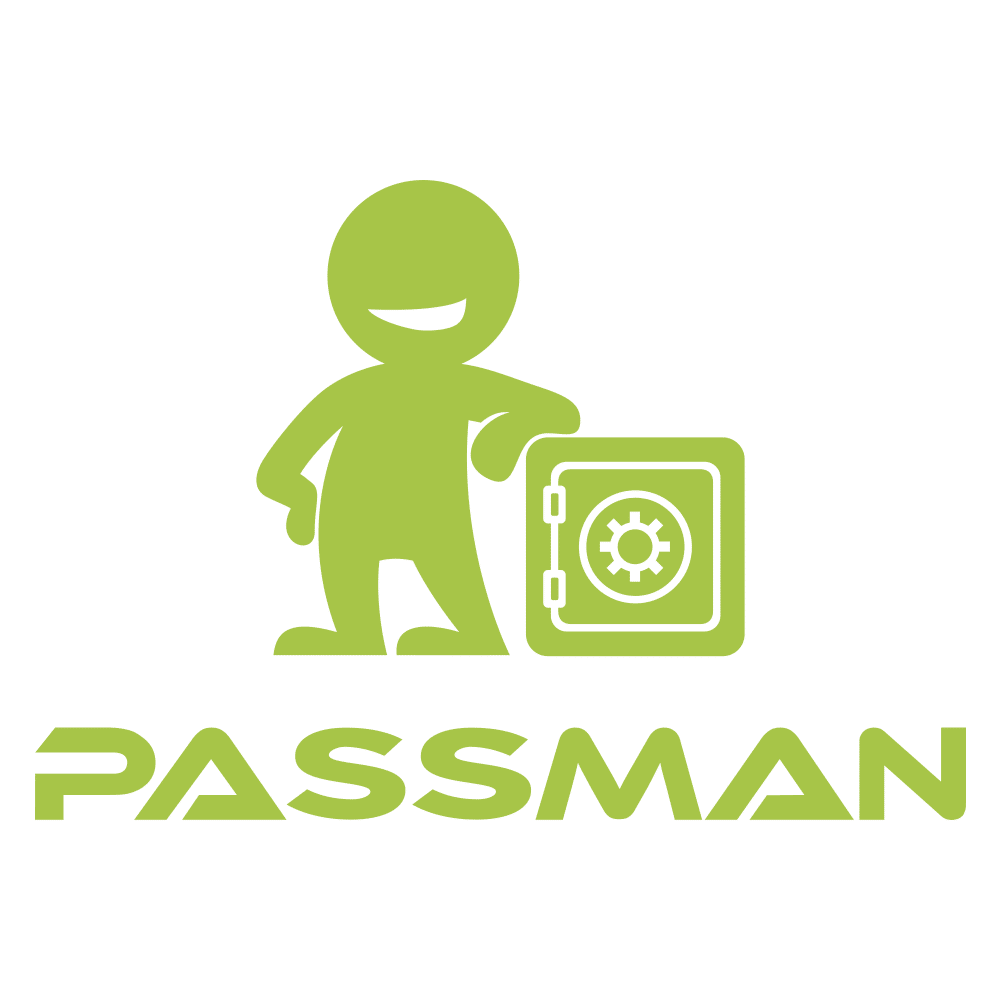Frequently Asked Questions
PassMan is a password manager specifically developed for businesses. It protects your sensitive business data with the highest encryption method (AES-256 bit).
PassMan not only stores company secrets encrypted, but also controls user access according to roles, and also shows who accessed critical systems and when. You can even log in to target systems with one click without even seeing the password.
PassMan complies with GDPR, PCI DSS, ISO 17799, ISO 27001, HIPAA and NIST 800-66 for password storage and exchange.
We do not have access to the safe containing the passwords, so no one can access your “secrets” through us.
We constantly check PassMan with 2 different vulnerability checking software. Periodically, external partners also perform Black-box tests.
Yes, PassMan also complies with GDPR, PCI DSS, ISO 17799, ISO 27001, HIPAA and NIST 800-66 for password storage and exchange.
PassMan stores business secrets encrypted and can control the access for them. You can customize access settings and you can also define password policy. PassMan can show you who accessed critical systems and when, allowing a high level of control over all company secrets. The system can send email alerts if any unexpected event is detected. Find out more about features.
PassMan provides a free trial version on a cloud basis (30 days). If you need the on-premise version, you can download the software and use it for free (up to 3 users). If you need to expand the limits of the basic on-premise plan, you can request a 30-day free trial license. A live DEMO version is also available, where anyone can enter and try the software with test data.
You can add existing passwords to PassMan in two ways, manually or by importing.
Manual: if you have already created a target (e.g. your CRM software), create a new account and set the existing username-password pair that you use to login your target (or create new password).
By import: if you have a large set of data – which you want to add to PassMan easily – just import the passwords, you can do this from Microsoft AD or an Excel file.
If you need to run PassMan on your own server (on-premise), download the software first. PassMan does not need to be installed, because you need a virtual machine to run it. We currently support 3 different VMs:
- VMware
- Hyper-V
- Proxmox (Free)
The time of configuration process may differ in case of the different type of VMs.
If you use PassMan Cloud, you have nothing to do, we are responsible for updating the vault of our customers. In case of the on-premise version, to update your existing PassMan, download the update files first and upload them one by one to the Padmin (PassMan admin) system. You can find more information about installation on the download page or in the User’s Guide.
Padmin is PassMan’s admin interface where you can perform basic security configurations, access important system information (CPU, Disk, etc.), create backups, import data, and make advanced settings (automatic tasks, e-mail accounts, remote access, etc.).
PassMan Cloud
- If you would outsource IT operations (configuration, updates, backups)
- If you want to achieve lower prices
- If you don’t bother that your data are stored in an external server
- You want to reach your „open-to-the-net” targets anytime, anywhere
- You don’t need any ’VIP’ support
PassMan Server (on-premise)
- If you have trained IT experts and resources for operations
- If you want full control over your in-house system
- If you need full functionality (+ password sync & HA)
- If you want to have full access to all of your targets
- If you may need ’VIP’ support
You can sign up for the cloud-based version of PassMan (free for 30 days, max. 25 users, max. 200 passwords). If you want to keep using PassMan after the free trial, select the best plan and order your license from our website.
For the server (on-premise) version of PassMan, download the installation package first. After configuration, you can use the software for free for up to 3 users. If you need to extend your limits, sign up for a 30-day trial license or select the most suitable plan and order your license from our website.
Cloud plan: can be used for keeping all passwords secure, but it can’t synchronize passwords/SSH keys with targets.
Standard plan: can be used for keeping all passwords secure, but it can’t synchronize passwords/SSH keys with targets.
Premium plan: can be used for keeping all passwords secure & it synchronize passwords/SSH keys with targets.
Enterprise plan: same features as the Premium plan with HA (3-member cluster group).
Yes. If you have an active subscription, but you have reached one of the limits specified in the plan (e.g. number of users), you may need to move to the next level within the certain plan. If you want to change your plan within the same year of purchase, we will deduct the price from your new plan that you have already paid for your original plan. In this case, inform our staff so we can set up the right discount for you in our webshop.
In PassMan, targets are systems to which multiple accounts (password/username pairs) can be attached separately. You can record the following types of target systems in PassMan:
- Web (application, website…)
- Windows
- Linux
- macOS
- Cisco IOS
- Solaris
- Memo (simple recording, without specification)
Accounts are practically username-password/SSH key pairs. You can add more than one account to a single target system (e.g. admin, teammate, shared passwords etc.).
Our staff details the features of the software during a free & online MS Teams meeting and is ready to answer any questions you may have. We also provide a public test system that hosts both Windows and Linux servers for full testing.
Other Questions
You can login to your target systems via three different ways, but all require that the given system is already stored in the PassMan Password Manager.
Login from browser:
With the help of the PassMan Secure Login web extension, you can login to websites and web applications without entering passwords. Visit the login interface of the given page and select the PassMan icon from the extensions in the top right corner and click on the button WEBLogin. With this process you will be able to login your target automatically and securely.
Login from PassMan with one click:
PassMan’s ‘One-click’ feature allows users to access websites, web applications, Windows remote desktop or Linux remote machines from PassMan with just one click, even without knowing the passwords/SSH keys! To use this feature, you need to install the proper plugins. This login process significantly shortens the time of traditional (manual) RDP connection, so with this function alone you can save at least 3 working hours a year.
Login from PassMan with Search & Copy-Paste
PassMan is a digital vault that stores all business secrets encrypted. Users can simply use the search engine to find the target system they want to login and copy the username-password pair (depends on permissions).
Yes of course. PassMan is a password manager with a completely unique approach, which strives for as detailed and customizable security as possible. As a result, you can set permissions for folders, target systems and accounts, and define password policies for folders and target systems. The structure of PassMan is the following:
- folder
- target
- account (password/SSH key – username)
You can record several target systems within a folder (folder isn’t target system), so you can group targets according to different company departments (e.g. Marketing folder: Hotjar, MailChimp, WordPress targets).
The following target systems can be registered:
- Web (application, website…)
Windows
Linux
macOS
Cisco IOS
Solaris
Memo (simple recording without specification)
You can record an account if a target system is already recorded in PassMan. Accounts are practically username-password/SSH key pairs. Since several employees can access a given target system, it will either be necessary to record several accounts, or you can add shared accounts that has been in common use until now. In this case, please pay particular attention to the appropriate authorization (permission) management settings.
High availability is available in the ENTERPRISE plan of the server (on-premise) version.
The cloud solution does not currently have HA. The advantage is that it requires even fewer parameters to be configured than the on-premise deployment. We cannot provide as high availability as with PassMan On-Premise Cluster because we consider data security (each cloud system has separate instance and separate OS) more important than availability.
If high availability is top priority for you, the Cluster version can also be deployed on AWS, i.e. high availability can be achieved in private cloud.
Database backups are made of the vault. The backups are encrypted and the backup frequency can be set.
PassMan can currently change passwords automatically on Windows, Linux, Oracle Solaris, MacOS, Cisco IOS.
For AD accounts, 2FA sharing only works when logging in using the Authenticator App method.
We retrieve the data of the user who is logging in from AD, so we update this data when you log in.
In case of AD and MS Entra ID, we use a local cache in PassMan for temporary data storage, because it would be slow to run e.g. a password list or a search for 5-10 thousand users at the frontend operation.
There is no need to give the right to open the vault, because the open status of the safe applies to everyone. Anyone who can open the safe may not be able to access/view even a single piece of data in the safe (depends on the permission management).
After restarting PassMan, the vault must be opened to access the secrets.
Yes, data can be exported to an Excel file.
Checkout: password extraction, i.e. viewing and copying the password
Checkin: means returning the password in the event that we want to use a password exclusively for a certain period of time, i.e. we do not want someone to change a given password during a work process (e.g. running a script). In other words, we use the password exclusively and when we no longer need it, we return it (we also make it available to others). Automatic password change can also be required at the time of return.
Reports are generated for objects that we have subscribed to (i.e. we have access to subscribe to the report). Custom queries can be generated, but customizable reports are not yet available in Passman.
The domain will look like “companyname.passman.co” when signing up, based on the information you enter in the “Company name” field of the form.
PassMan has a REST API, there is no webhook for security reasons, and consequently API keys cannot be created. The program/script must be operated by a specified user according to permissions.
For such applications like Slack or Skype, the “one-click” function only works if you use the app’s web client. Otherwise, only the username-password pair can be stored in PassMan.
Sure, PassMan can store SSH keys in addition to passwords, and the one-click feature (without typing or copying the password/username) can also be used for SSH keys.

